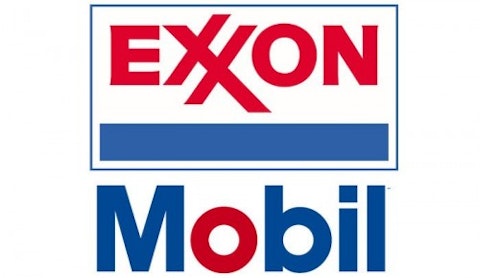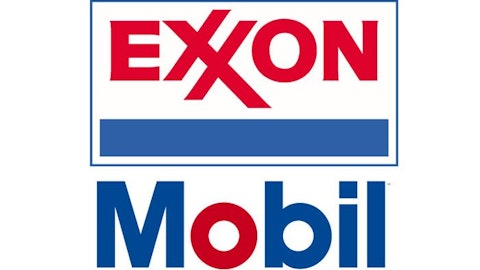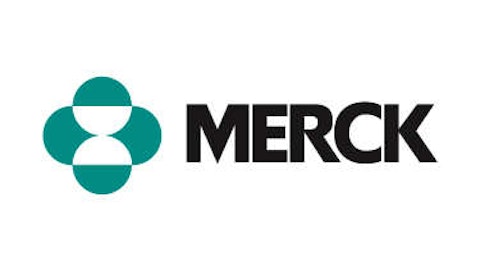Several years ago Exxon Mobil Corporation (NYSE:XOM) and Synthetic Genomics (SGI) attempted perhaps the largest and most ambitious photosynthetic algae project in history. The goal: grow algae in large-scale, open runways or ponds using nothing more than carbon dioxide and sunlight. Oh yeah, and bring algae-based fuels to cost parity with petroleum fuels by 2019. Exxon Mobil Corporation (NYSE:XOM) played the role of financier — cutting checks totaling $100 million to date with plans for an additional $500 million — while SGI played the role of world-renowned and crazy-but-onto-something synthetic biology firm.
The two scoured the globe (literally) for naturally occurring algae strains, or wild-type strains, in hopes of finding one with commercial potential. Unfortunately for those wishing the project to success, the partners announced that wild-type photosynthetic algae just didn’t produce enough feedstock quickly enough for economical products — even with minor changes to their genomes. The two will now utilize synthetic biology to realize their goals. Ironically, Solazyme Inc (NASDAQ:SZYM) discovered these very same pitfalls over one decade ago. So how did these companies not see failure coming?
Told you so
Before you think “I could have told them that and saved them $100 million”, you should know that the Exxon Mobil Corporation (NYSE:XOM)-SGI project was really a mining operation above all else. The head of SGI is none other than Dr. J. Craig Venter, who famously led the privately funded arm of the Human Genome Project and created the first completely artificial living organism. So while the project itself failed to bring us algae-based fuels by 2019, Venter now owns a treasure trove of diverse genetic material for building a successful microbe to get the job done. This was a major goal all along.
In the early days of Solazyme Inc (NASDAQ:SZYM), founders Jonathan Wolfson and Harrison Dillon tried their hand at open pond technology. They quickly learned that would be a difficult endeavor and switched their focus from photosynthetic algae to heterotrophic algae, which grow in the dark by fermenting sugar. Imagine being the venture capitalist at that meeting (“yeah, so we’re going to change everything”)! The company also employs heavy doses of genetic engineering to alter the metabolism of its microbes to produce the numerous tailored oils of its platform.
Why didn’t Exxon Mobil Corporation (NYSE:XOM) and SGI employ this from the beginning? Perhaps they were looking for the quickest route to commercialization (engineering a microbe requires more overhead), but they now presumably have an advantage in terms of genetic tools to work with.
What this announcement doesn’t mean
It is important not to take the wrong thing away from this announcement. Some news outlets are failing to make the distinction between wild-type algae and genetically altered algae, instead claiming that algae-based fuels are dead. That simply isn’t true.
Companies such as Algenol (photobioreactor bags), Sapphire Energy (open ponds/runways), and Joule Unlimited (photobioreactors) are just some of the firms making progress. Algenol recently hit ethanol yields in excess of 9,000 gallons per acre (link opens PDF) — compared to 400 gallons for corn and 800 gallons for sugar cane on the same basis. Sapphire Energy is churning out Green Crude at the world’s first commercial demonstration facility, which will initially produce 1 million gallons of finished petroleum products per 100 acres. And Joule Unlimited wields the Helioculture platform (my favorite industrial biotech platform) that combines photosynthetic microbes with modular systems. That should allow the company to achieve the scale of an open pond with the finesse of a closed bioreactor.
Solazyme Inc (NASDAQ:SZYM)’s foresight years ago is now allowing it to reap significant benefits, but that doesn’t change the fact that photosynthetic technologies remain the Holy Grail of chemical production. Here is how the two compare:
| Attribute or Potential Attribute | Photosynthetic Algae System | Heterotrophic Algae System |
|---|---|---|
| Scale boundary | Virtually limitless | Bioreactor size, supporting equipment size/efficiency |
| Control over growth | Difficult in open ponds/runways; Easier in photobioreactors but size limited | Very good control over growing environment |
| Production per acre | Very high | Higher than traditional agriculture, but lower than photosynthetic algae |
| Contamination risk | High (major current drawback) | Easier to manage in bioreactor |
| Production cost | Very low (potentially zero or negative) | Lower than petroleum or agribusiness chemicals, but higher than photosynthetic algae |
| Capital cost | Very high for open ponds/runways, Low for photobioreactors | Medium and more predictable |
Just as Exxon Mobil Corporation (NYSE:XOM) sees the ridiculous potential of photosynthetic algae, agribusiness giants see the potential to boost their top and bottom lines with Solazyme’s more predictable heterotrophic technology. Bunge Ltd (NYSE:BG) owns half of the 100,000 metric ton facility being constructed between the two in Brazil as well as half of the 200,000 metric tons being planned elsewhere worldwide. Why sell sugar or ferment it into ethanol when you can ferment it into higher value chemicals being developed by Solazyme Inc (NASDAQ:SZYM)? Similarly, why drill for expensive and increasingly heavy crude oil when you can grow sweet crude at low cost with waste carbon, wastewater, and free sunlight?
Foolish bottom line
Exxon Mobil Corporation (NYSE:XOM) and SGI will go back to the whiteboards in their attempts to commercialize their sun-loving algae. The announcement isn’t as much of a failure as you may think, although it is true that we will not have algal fuels from the two by 2019. However, society could have algal fuels from Solazyme Inc (NASDAQ:SZYM) by 2019 — even if that isn’t its priority right now. The company is getting along just fine in closed systems and currently building 125,000 metric tons of annual commercial-scale capacity with an additional 325,000 metric tons on the table with various partners. Perhaps Exxon should have pledged $600 million to Solazyme. At least it would have had something to show for it.
The article Exxon Discovers What Solazyme Already Knew originally appeared on Fool.com and is written by Maxx Chatsko.
Fool contributor Maxx Chatsko has no position in any stocks mentioned. Check out his personal portfolio, his CAPS page, or follow him on Twitter @BlacknGoldFool to keep up with his writing on energy, bioprocessing, and emerging technologies.The Motley Fool owns shares of Solazyme.
Copyright © 1995 – 2013 The Motley Fool, LLC. All rights reserved. The Motley Fool has a disclosure policy.




